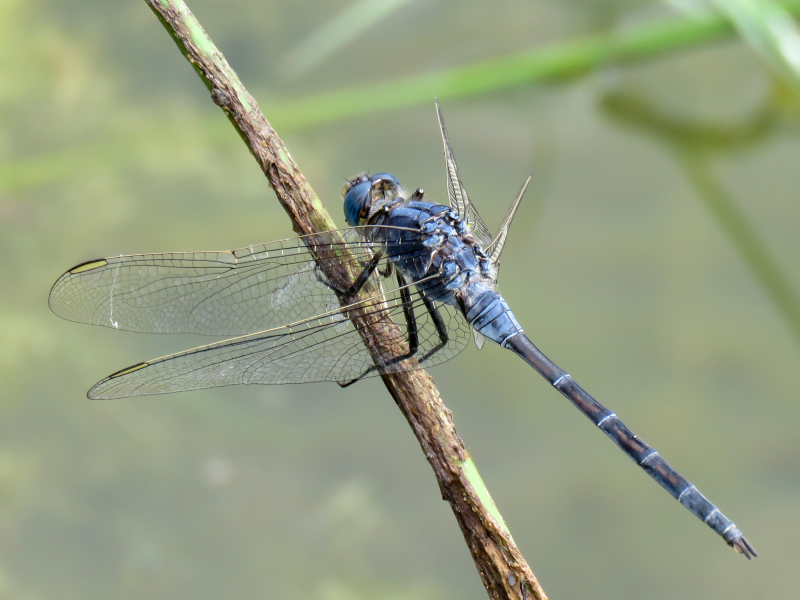The photo above (by Diana Russell) can be viewed in OdonataMAP here.
Find this species in the FBIS database (Freshwater Biodiversity Information System) here.
Family Libellulidae
Orthetrum trinacria – LONG SKIMMER
Identification
Large size
Length up to 67mm; Wingspan attains 82mm.
The male Orthetrum trinacria is unlikely to be mistaken for another species. The combination of its size, shape and darker colour render it unmistakable.
Females are also readily identifiable and they have the distinct shape of the males but are overall pale yellow, boldly marked with black. Females and immature males can resemble those of Orthetrum icteromelas (Spectacled Skimmer) in terms of colouration and patterning. The Spectacled Skimmer is significantly smaller and there is no size overlap between the two species.
Click here for more details on identification.
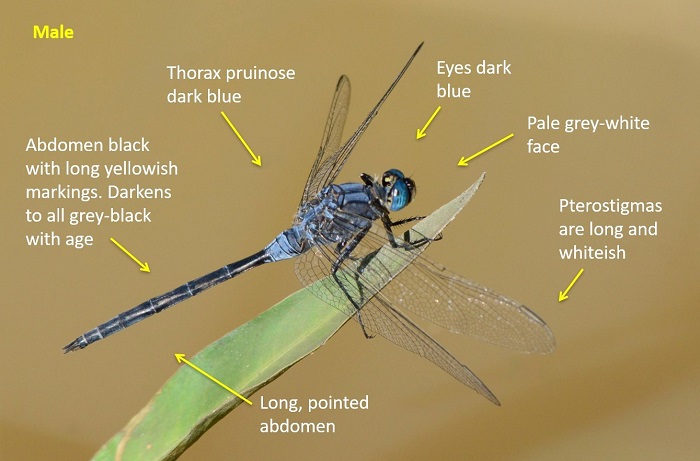
Mpempe Pan, KwaZulu-Natal
Photo by Ryan Tippett
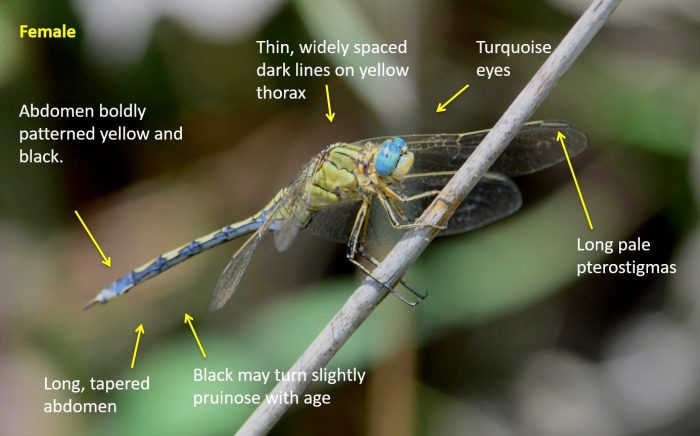
Falsebay, iSimangaliso Wetland Park, KwaZulu-Natal
Photo by Ryan Tippett
Habitat
Most often found around the fringes of still, open water habitats like lakes, pools and dams. Less regular at the margins of rivers and streams, where it favours slower moving sections. Occurs over a range of habitats throughout South Africa, including arid and semi-arid areas. Makes use of seasonal wetlands as well as artificial reservoirs and livestock drinking sites in the arid interior.

Photo by Ryan Tippett
Behaviour
Most often seen perched on vegetation over or near the waters edge. Also regularly sits on bare sand, gravel or rocks. Hunts from a perch and the flight is swift and typically low over the water.
A voracious predator that regularly feeds on large insects like butterflies and other dragonflies.
On the wing from October to May, although most common in late summer.
Status and Conservation
Common over large areas of South Africa. Listed as of Least Concern in the IUCN Red List of Threatened Species.
Distribution
Orthetrum trinacria is a very widespread species, occurring throughout Africa and is also found in parts of Southern Europe and the Middle East.
Occurs all over South Africa, although less numerous in the central, drier regions.
Below is a map showing the distribution of records for Long Skimmer in the OdonataMAP database as at February 2020.
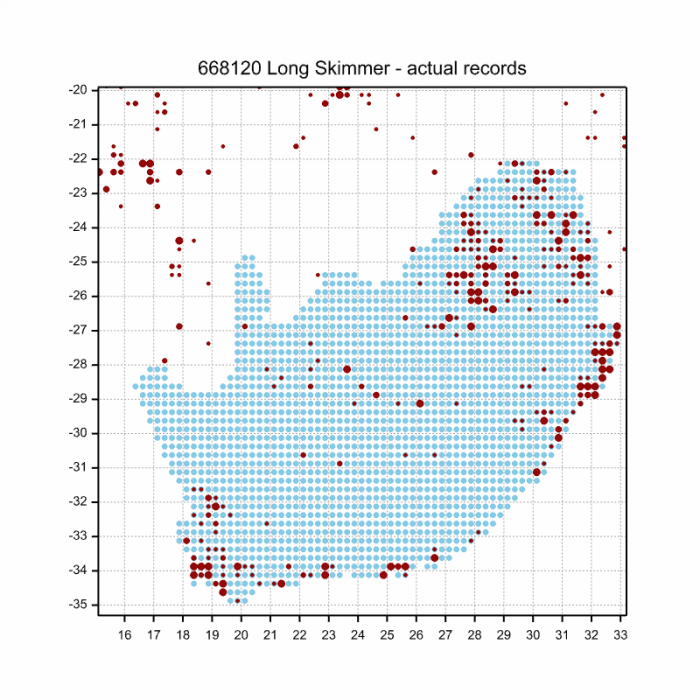
The next map below is an imputed map, produced by an interpolation algorithm, which attempts to generate a full distribution map from the partial information in the map above. This map will be improved by the submission of records to the OdonataMAP section of the Virtual Museum.
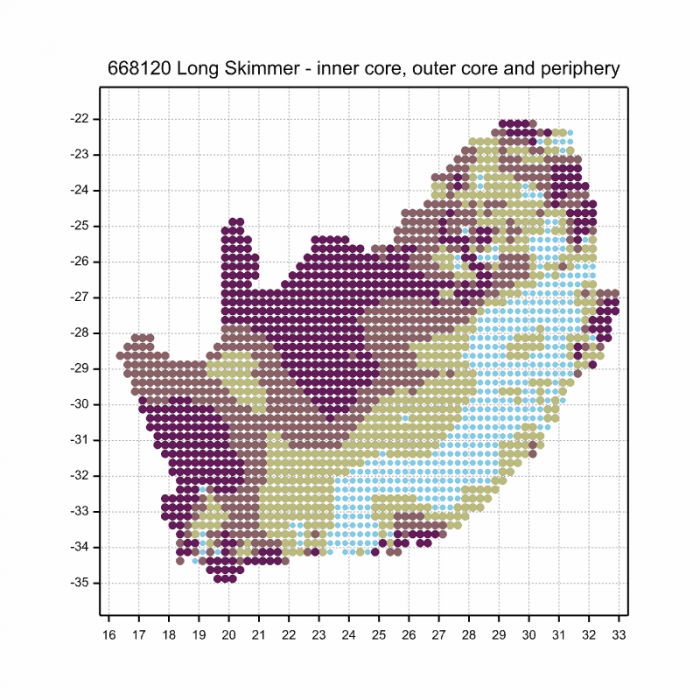

Ultimately, we will produce a series of maps for all the odonata species in the region. The current algorithm is a new algorithm. The objective is mainly to produce “smoothed” maps that could go into a field guide for odonata. This basic version of the algorithm (as mapped above) does not make use of “explanatory variables” (e.g. altitude, terrain roughness, presence of freshwater — we will be producing maps that take these variables into account soon). Currently, it only makes use of the OdonataMAP records for the species being mapped, as well as all the other records of all other species. The basic maps are “optimistic” and will generally show ranges to be larger than what they probably are.
These maps use the data in the OdonataMAP section of the Virtual Museum, and also the database assembled by the previous JRS funded project, which was led by Professor Michael Samways and Dr KD Dijkstra.

